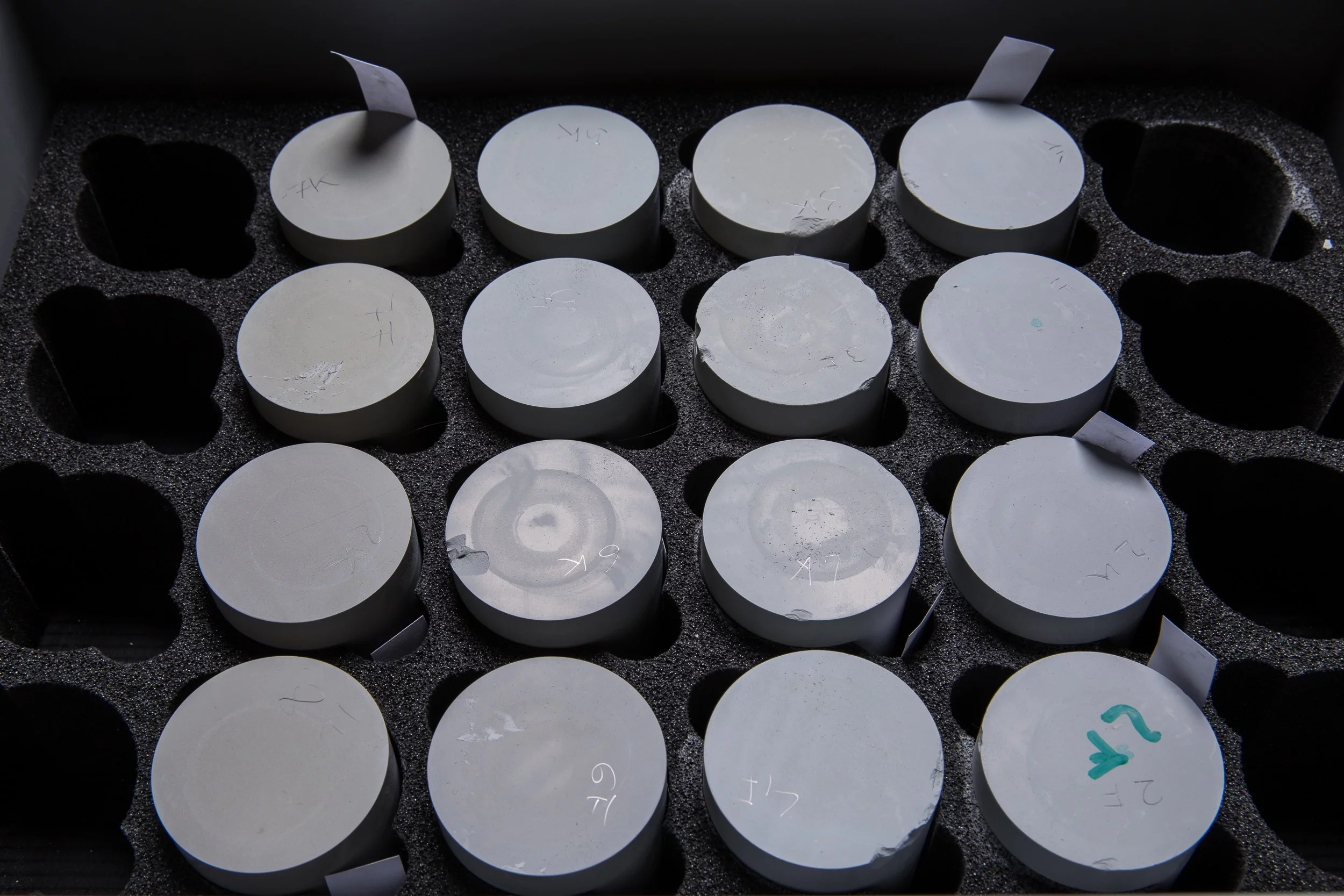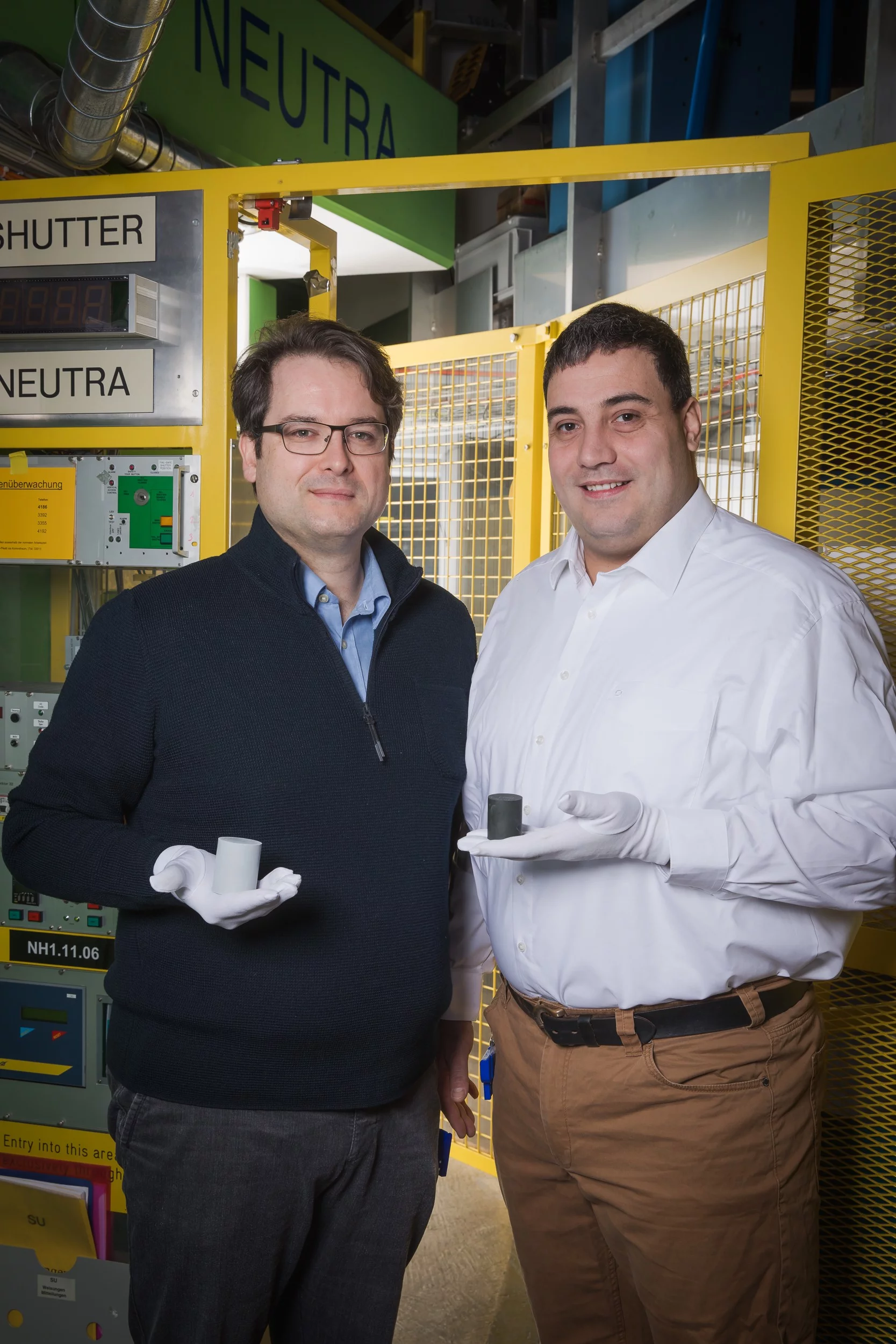The ABB facility in Wettingen, Aargau, got practical recommendations on increasing output in the manufacture of ceramic components. The ceramics in question are voltage-dependent resistors used in overvoltage protectors – a kind of lightning protection system – for example, in electrical transmission lines. Thanks to the well established neutron imaging at the Paul Scherrer Institute PSI, it was possible to examine material changes in the ceramics during a production process called burnout. This investigation took place within the framework of a feasibility study funded by Hightech Zentrum Aargau. With the help of the neutron images, ABB employees were able to see where there was potential for further process optimisation.
In a collaborative study, researchers from the Paul Scherrer Institute, together with engineers from the technology company ABB as well as scientists from the ABB Corporate Research Centre, have investigated high-performance components made from ceramic materials. The three-month feasibility study (October to December 2017), which was conducted at PSI, had the goal of better understanding processes used to manufacture the ceramic components. The components were produced at the ABB site in Wettingen, Aargau. With the results of the study, ABB has a crucial basis for launching a production increase while maintaining the quality of the ceramic components. The closing session of the feasibility study is scheduled for 14 February 2018.
For their studies of the ceramic components, the PSI researchers set up a very unusual kind of quality control: They used neutron imaging, which is only available at a few research institutions worldwide. This imaging method is solidly established at PSI and allows a special, non-destructive view into the interior of materials and components. In this case, the PSI researchers used neutron imaging to investigate material changes that take place during burnout when the ceramics are manufactured.
High-performance ceramics, illuminated with neutrons
The ceramic components manufactured in Wettingen are so-called varistors: voltage-dependent electrical resistors that are used in the medium- and high-voltage area, for example in transmission lines running from power plants to distribution facilities. They protect power lines from overvoltages caused, for instance, by lightning strikes. The cylinder-shaped varistors manufactured in Wettingen are about the size of ice hockey pucks. They consist of a particular zinc-oxide ceramic material, and one production step requires the components to be heated up to 1,200 degrees Celsius in a special oven. In their reliably high quality, ABB's varistors have a differential advantage that makes them competitive worldwide. In order to increase production and thus maintain a competitive edge in the future, the ABB staff wanted to find out how far the number of varistors fired in the oven simultaneously could be increased without any loss in quality. With the help of our neutron images of different varistors made in special test series, we were able to provide a well grounded answer to this question
, says PSI researcher Grünzweig.
The three-month-long feasibility study was funded with 20,000 Swiss francs by the Hightech Zentrum Aargau, within the framework of an innovation program for companies based in the Aargau region. PSI, ABB, and the high-tech centre teamed up for the project. With this we really demonstrated the power of Aargau
, Grünzweig says. In addition to the feasibility study, the PSI researchers and ABB employees jointly gathered further data that will lead to a scientific publication.
Neutrons make ceramic binders visible
Neutron imaging at PSI proved to be an advantageous investigation method, because neutrons are deflected from their straight path by atoms of hydrogen in particular – so that hydrogen shows itself as a contrast in the neutron image. The ceramic varistors are made from a dry powder mixture, which is combined with a liquid binder. The latter contains hydrogen. Thus, with neutrons, the distribution of the binder in the ceramics can be plainly seen.
Heating the ceramic components burns this binder out. Our neutron images were able to make visible how well and how evenly the burnout of the binder worked
, says David Mannes, one of Grünzweig's research colleagues at PSI. Because we examined varistors from different test series, which had been fired in ovens that were either more or less fully loaded, we could say definitely at what loading density in the oven the varistors' quality suffered – and up to what density no adverse effects were happening.
And Michael Hagemeister, research and development group leader for metal-oxide varistors at ABB Wettingen, adds: On the basis of this data, we were finally able to determine how many varistors could be fired at the same time in our oven without a loss in quality.
Contact
Dr. Christian Grünzweig
Laboratory for Neutron Scattering and Imaging
Paul Scherrer Institute PSI
+41 56 310 46 62
christian.gruenzweig@psi.ch
[German, English]
Additional information
Research using neutrons at PSI
Hightech Zentrum Aargau
ABB Schweiz AG (in German, French or Italian)
About PSI
The Paul Scherrer Institute PSI develops, builds and operates large, complex research facilities and makes them available to the national and international research community. The institute's own key research priorities are in the fields of future technologies, energy and climate, health innovation and fundamentals of nature. PSI is committed to the training of future generations. Therefore about one quarter of our staff are post-docs, post-graduates or apprentices. Altogether PSI employs 2300 people, thus being the largest research institute in Switzerland. The annual budget amounts to approximately CHF 450 million. PSI is part of the ETH Domain, with the other members being the two Swiss Federal Institutes of Technology, ETH Zurich and EPFL Lausanne, as well as Eawag (Swiss Federal Institute of Aquatic Science and Technology), Empa (Swiss Federal Laboratories for Materials Science and Technology) and WSL (Swiss Federal Institute for Forest, Snow and Landscape Research). (Last updated in June 2025)


